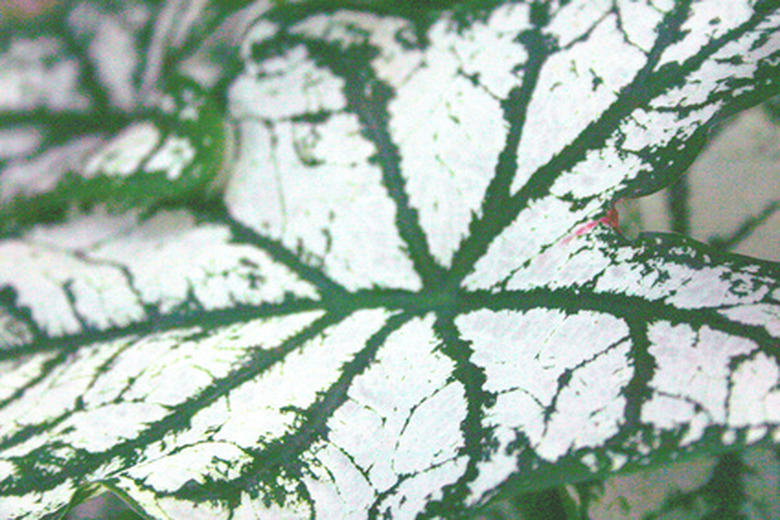Shade-Loving Tropical Plants
The unusual foliage patterns, colors and textures of tropical plants helps to brighten up shaded areas of the landscape and garden. Grown in a wide range of sizes, shapes and colors, shade-loving tropical plants require moist, well-drained soil and a range of shade from light to deep shade. Tucked within borders, beds and containers, tropical plants create a showy garden display.
Begonia
Begonia (Begonia "Green Gold") is a tropical perennial plant that has a vigorous growth rate and clumping growth habit. It grows 6 to 12 inches tall and wide, ideal for lining a border or bed, or grown within a container for its vibrant foliage. The silver leaves on begonia have deep green veining that creates a dramatic display. New foliage on begonia has a warm golden tinge and is edged with burgundy. Begonia plants grow best in part to full shade and emerge in summer. They grow best in well-drained, deep soil and thrive in humidity. Plant begonia in USDA zones 10 to 11.
- The unusual foliage patterns, colors and textures of tropical plants helps to brighten up shaded areas of the landscape and garden.
- The silver leaves on begonia have deep green veining that creates a dramatic display.
Elephant’s Ear
Elephant's ear "Illustris" (Colocasia esculenta "Illustris") is a tropical bulb that has an upright, clumping growth rate. It grows 3 to 6 feet wide, making for a dramatic backdrop to a garden bed. The large, bright green, heart-shaped leaves on elephant's ear "Illustris" are accented with deep purple for a variegated display to the garden. Elephant's ear "Illustris" grows best in part to full shade but tolerates a smattering of sunlight. It prefers moist, boggy environments, similar to a tropical environment. Elephant's ear "Illustris" grows best in USDA zones 8 to 11.
Caladium
Caladium (Caladium bicolor), also called angel's wings, is an annual tropical bulb. They grow up to 2 1/2 feet tall and wide and have calla-type blooms. The mottled green, arrow-shaped leaves on caladium grow 1 1/2 feet long and are speckled with combinations of red, white and pink to create their distinctively colored veins. Caladium grows best in part shade to full shade and fertile, nutrient-rich soil that is acidic. Caladium does not tolerate direct sun. Grow caladium plants in USDA zones 9 to 10.
- Elephant's ear "Illustris" (Colocasia esculenta "Illustris") is a tropical bulb that has an upright, clumping growth rate.
Chinese Windmill Palm
Chinese windmill palm (Trachycarpus fortunei) is an evergreen plant that grows best in light shade. They grow over 30 feet tall and have a spread of 6 to 10 feet, creating a commanding landscape presence. The 4-foot-wide, swordlike, bright green leaves on Chinese windmill palms remain with color all year long. Chinese windmill palms have yellow, large plumes or flowers that emerge in early summer to light up the garden with color. They grow best in well-drained, fertile soil but tolerate clay soils. Plant Chinese windmill palms in USDA zones 8 to 11.
